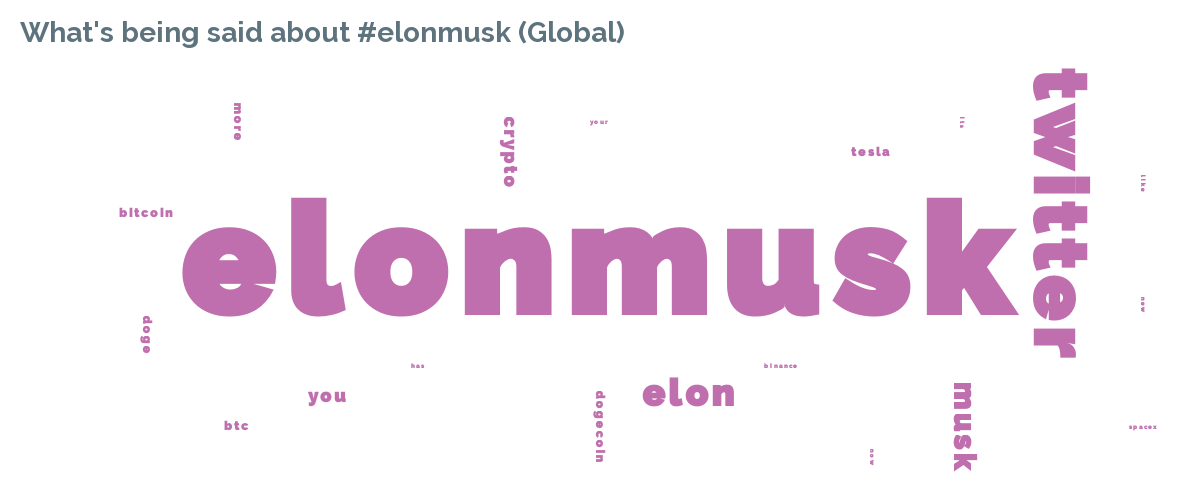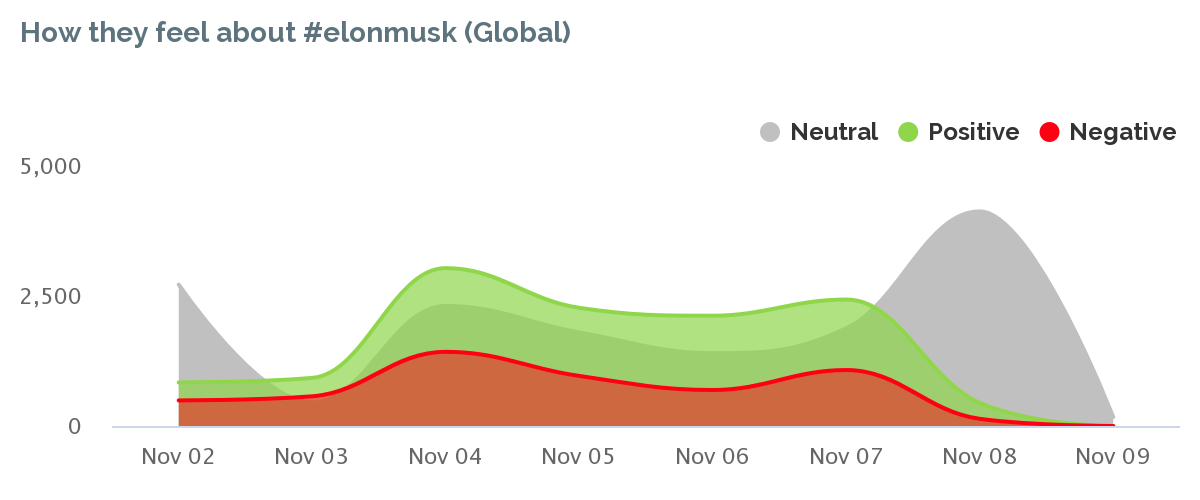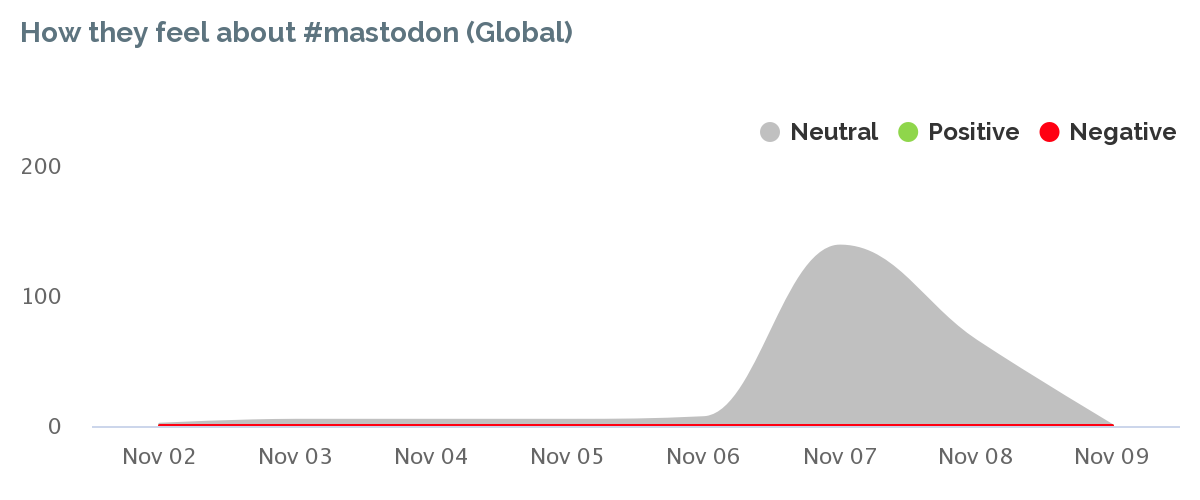It’s been another busy week in Twitter-land, since Elon Musk’s much anticipated takeover of Twitter took place on 27 October. Mass layoffs, the ‘blue tick’ debate, and thousands of Twitter users signing up to rival platform, Mastodon. If you don’t know your Tweet from your Toot, or it all sounds like a lot of hot air to you, we’ve rounded up some of what’s been going on in the Twittersphere since Elon’s big takeover.
Elon Musk takes over Twitter… what’s been happening this week?
Everyone’s still talking about Elon
His Twitter notifications must be off the scale, because nearly everyone seems to have something to say about Elon and the changes he’s implemented at Twitter HQ over the past few days.
Understanding what people are saying about you on social media is extremely helpful for a business. It can help you know which topics are important to your customers, and allows you to join into those relevant conversations online. The Maybe* ‘What’s being said’ feature tracks conversations on any given topic, and pulls the data together for you in a handy word cloud. The bigger the word, the more frequently it’s being used.
We’ve been monitoring the term #elonmusk to see what people have been saying about him.

The sheer size of the words ‘elonmusk’ in the word cloud should give you some indication of the volume of mentions Elon’s been getting. We’ve totted up over 21,000 mentions of the hashtag #elonmusk alone, and that is only from the past few days. His name is everywhere, saturating the newsfeeds, as Twitter users absorb each announcement that emerges from Twitter Towers.
The blue tick
As mentioned in our previous post, Elon’s plan to bring more revenue into the platform and reduce the number of ads has centred on Twitter’s verified (or ‘blue tick’/’blue checkmark’) accounts. This was confirmed with a monthly $7.99 (£7) fee to retain your verified status, and the promise of fancier account experiences in the pipeline.
Following that pronouncement, Elon announced a crackdown on parody accounts, stating that all blue tick account owners can only use their own username, and not change it to anything else, lest their account be suspended.
Finally, given that any user will be able to pay for a verified badge, Twitter have announced their ‘Official’ badge, for those Twitter users who are -more- verified than others (which sounds suspiciously like the original verification option to us, but each to their own).
A lot of folks have asked about how you'll be able to distinguish between @TwitterBlue subscribers with blue checkmarks and accounts that are verified as official, which is why we’re introducing the “Official" label to select accounts when we launch. pic.twitter.com/0p2Ae5nWpO
— Esther Crawford ✨ (@esthercrawford) November 8, 2022
The layoffs
In apparently further cost-saving plans, Elon dramatically reduced the size of Twitter’s workforce with a series of mass layoffs – slashing jobs company-wide, and firing several of Twitter’s top executives. This caused shockwaves across the app as former employees shared their news with their own followers.
The ‘How they feel’ graph in our Insight Builder tool measures sentiment – how positive (green), negative (red) or neutral (grey) the tone of a conversation is about other businesses. Click anywhere on the graph to see the posts that have driven the positive, negative or neutral sentiment.
We’ve tracked the sentiment of the #elonmusk conversation from the past few days and ultimately it’s a mixed bag. Where you can see the neutral grey, the positive and negative sentiments effectively cancel each other out. Feelings continue to run high.

The departures
In the wake of all this upheaval, it might be little surprise that Twitter users – verified and not – have been keen to seek out an alternative micro-blogging site. Many high profile individuals have sought sanctity in Mastodon, and are looking to rebuild their communities there.
To Tweet or to Toot? That is the question
So what’s all this we’ve been hearing about Mastodon? Mastodon has been the Twitter-leaver’s platform of choice in 2022. A little more complicated to get started with than Twitter, it’s known as an ‘open source social media platform’. This means that rather than everyone using the same server, instead it’s a collection of social media networks run on thousands of servers across the world, all linked together by Mastodon tech, and collectively known as The Fediverse. Unlike Twitter, it’s funded by Patreon and states that its original server is non-profit.

Visually, Mastodon resembles Twitter, and your posts – or Toots – look similar, too. There’s a greater word count, you can use hashtags, and you have more control over who can see your posts within your server. Toots are shown chronologically in a news feed, and users have the option to like and share posts, much as you can with Twitter.
The servers are where it gets interesting. To sign up, you choose a server, and that server becomes part of your username. Unlike Twitter, Mastodon is not just one entity. It’s a collection, which means that no singular individual owns it, rather people or organisations own the servers themselves, which is known as a decentralised platform. The servers are individually moderated, or not moderated at all, which could prove problematic if the platform continues to grow.

Although Mastodon was launched in 2016, it’s lived in relative obscurity since its inception. Over recent days, Mastodon experienced a boom in popularity and mentions social-wide – quite literally going from zero to hero… or near enough.
The Maybe* ‘See what works’ graph measures engagement volumes so you can learn what posts are encouraging the most reactions around a topic or conversation. As you can see in the graph below, the number of posts using the hashtag #mastodon have increased dramatically in recent days. Sentiment scores have been ultimately mixed about #mastodon, just as they are for #elonmusk.


It’s fair to say that Mastodon isn’t yet ready to become Twitter v2, or whether it has the capacity to manage it at all. Will Twitter be able to rally? The world of social media moves at a rapid pace, and we’ll be keeping our ears to the ground and our eyes on our Insight tools for the foreseeable.
Ready to track a topic for yourself on Insight Builder?
- Head over to Maybe* on a desktop
- Select ‘Listening’ and choose ‘Insight builder’
- Choose your date range and the graphs and metrics you want to include
Pro tip: Add notes to the Insight Builder and save your report so you can keep track of what’s working for others and the tactics you might want to copy. The notes feature will also save you producing PowerPoint presentations or spreadsheets as you can email the report to yourself or a stakeholder on a regular basis.
Need help to get more from social media?
Join us at 10am on Monday for our Social Media Surgeries where we’ll show you how to use the scheduling, engagement, listening, reporting, and loyalty tools in Maybe*, so you can use them to help you deliver better business results.







